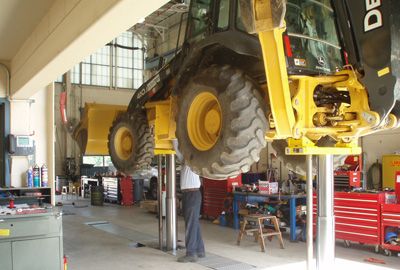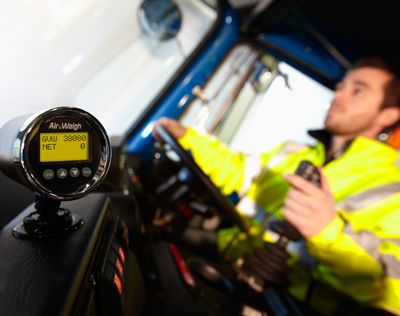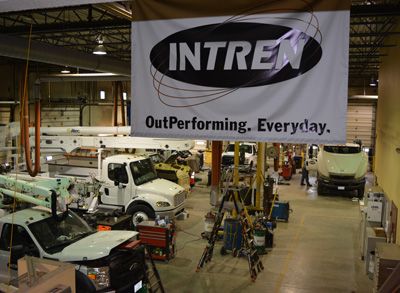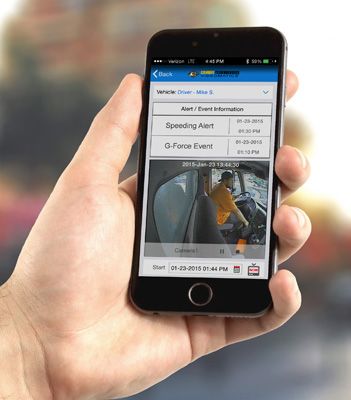A utility fleet is ultimately responsible for serving the public. So when a vehicle breaks down and delays an emergency crew’s response to a water main break or downed power line, that reflects poorly on the utility’s customer service – and on the fleet manager’s performance.
How can utility fleets reduce the risk of unexpected and costly downtime, especially when vehicles must be ready to respond in crisis situations?
The solution is timely preventive maintenance (PM), said Dale Collins, CAFM, the fleet services supervisor for Fairfax County Water Authority (Fairfax Water). “It’s so much easier and cheaper to maintain a vehicle than repair it after the fact. You’ll eliminate the downtime and the inconvenience, not only for your end users but also for the departments you’re serving.”
Collins started at Fairfax Water (www.fairfaxwater.com), Virginia’s largest water utility, as an entry-level mechanic in 1997. After quickly moving up the ranks, he was appointed to head the fleet department in 2006 and is now responsible for managing approximately 270 vehicles, ranging from sedans to Class 8 dump trucks, plus another 140 pieces of miscellaneous equipment, such as trailers and excavators. He also oversees the operations of the water utility’s two maintenance shops, which have a total of 10 bays and five vehicle lifts.
Utility Fleet Professional spoke with Collins to learn more about the new technologies and processes he and his team have adopted in recent years to make Fairfax Water’s fleet PM program more efficient and effective. Perhaps you’ll discover some ideas here that you can apply to your own fleet.
UFP: The value of timely PM is clear – it helps to maximize vehicle uptime, avoid major component failures and reduce overall maintenance costs. But how exactly do you define “timely”? Is it based on vehicle miles? Engine hours? Or a combination of these thresholds?
Collins: It depends on the application, the vehicle’s job description. The interval can be different even for similar types of vehicles.
Say you have a plant mechanic’s truck, which for us is a Ford F-350 Super Duty utility body truck that travels between the two treatment plants in the county, with a relatively light duty cycle. In this case, we typically base the PM interval on mileage.
But if you take a maintenance truck – which is also a Ford F-350 – that services a distribution area, that requires a different approach. In the wintertime, these trucks are logging a lot of miles and engine hours on the job site or going through heavy traffic. In this application, we’ll tend to base the PM interval on a combination of both miles and hours, or we may do it on a threshold of a certain number of miles or hours, depending on which interval comes first.
UFP: When managing a wide range of vehicle types and applications in a fleet, how do you track and determine when a timely threshold has been hit for each unit?
Collins: In 2009, we deployed an asset management system by SAP (http://go.sap.com/). At the time, our organization was already using SAP to automate customer service, finance and other operations functions. So it made sense for our fleet to use SAP as well. If you have a single system throughout the organization, it’s a little easier for everyone to speak the same language than it is to have different systems trying to communicate with each other.
Through SAP, we’re using a plant maintenance module that allows us to set up customized maintenance plans for each vehicle based on specific intervals of miles, hours or a hybrid between the two.
When a vehicle meets a specific PM threshold, the system self-generates a work order, automatically populates the form with the appropriate information and puts it in your queue that a particular asset is due for a PM. This really helps us stay on top of all our PMs and keeps our service backlog to a minimum.
Before automating our PM schedules, we had to depend on the operator to report when the vehicle was ready for service based on stickers placed on the equipment, which was very difficult to manage. The technology allows us to automate the process and take the operator out of the middle, so we can manage the PM schedules directly and ensure the service gets done on time.
UFP: How do you efficiently capture the vehicle data to feed into the system?
Collins: We use an on-site fueling system by E.J. Ward (http://ejward.com/), which we deployed in 2008, to capture the data. Each time an operator fuels the vehicle, the fueling system automatically uploads key vehicle information, such as the odometer reading, engine hours and any fault codes, like what you would see when there’s a check-engine light. And each night a file is generated, which updates the vehicle record in SAP.
It used to be that our drivers would have to fill out a form on a clipboard each time they fueled up their vehicles, and we would have to manually input that data into our fleet management system. There was a lot of human error we had to deal with, making it difficult to have good, clean data on which to base our PM schedules.
Although we have five fueling sites located throughout Fairfax County, a small percentage of our vehicles operate in the Falls Church area, which is not near any of our fueling sites. In this case, we have fuel cards obtained through our Virginia State Motor Fuel Fund that our operators can use. I’ll get a monthly report generated by the fuel card system, which we’ll feed into the SAP system to update the mileage and hours record for those vehicles.
We can’t get the same level of detail using the fuel cards, and it’s more of a manual process, but it affects only a small number of our vehicles.
UFP: As a fleet manager, you’re not only managing assets; you’re also dealing with people. How do you efficiently coordinate with drivers across the organization to ensure they bring their vehicles in for PM service at the appropriate time?
Collins: Yes, if you’re dealing with just assets, that would be easy. But you have to make sure you can accommodate the people you work with. I don’t care what business you’re in, ultimately, we’re all in the people business. Even the best asset management system can’t take into account all variables, so we find that it’s easier to work out the logistics on a personal level.
When a PM work order on a vehicle is generated by the SAP system, we’ll usually contact the employee’s supervisor and say, “Joe’s vehicle is due for service. When can we schedule him?” They can then look and see when the best time would be for him to give us an hour or so to perform the service. Or, depending on the relationship we have with the employee, we may contact that person directly to schedule the PM.
A standard PM usually takes 45 minutes to one hour. If we find that a corrective repair needs to be done, requiring more time, we usually have a spare vehicle or two already set up for their type of work. This way, we can perform that repair without having to add to the employee’s sit time, when he really needs to be out in that vehicle servicing the customer.
UFP: What is your strategy with spare vehicles?
Collins: We try to carry at least two service trucks – which are first-responder vehicles – at each shop location.
For construction inspection vehicles, we have vans set up as a mobile office. This way, if we find during the PM that a van needs an evaporator, we can work on it immediately, while putting the inspector into a fully upfitted spare van so he can do his job, without disruption, until his vehicle is repaired.
We like to have at least one spare for each type of customer we serve and multiples for the more critical stuff like a service truck or inspector van.
UFP: Ultimately, what has been the impact of automating your PM processes?
Collins: It’s difficult to quantify specifically. But I can tell you that although we’ve taken on a greater geographical area and more physical assets, we’ve kept our staffing level about the same. And we’re not working longer hours. I guess you can quantify the fact that our fleet size has increased, but we’re maintaining the same level of service, if not better, prior to automating our PM schedules.
And I can’t tell you the last time we had an oil-related failure or a transmission failure with PM schedules generated and managed through the automated system. We save tremendous amounts of time and money on not having to do major component swaps like transmissions, engines or rear differentials.
UFP: Is there anything we haven’t covered that you think would be important for our readers to know when it comes to maximizing PM effectiveness?
Collins: Make sure you have the right asset to begin with. This always helps with PMs. For example, you wouldn’t want to buy a half-ton truck to haul gravel all day. You want to make sure the truck is the best fit possible for the job. If you have a piece of equipment that you’re constantly overworking and overloading, asking it to do things it wasn’t designed to do, all the PMs in the world aren’t going to compensate for the component failures that will occur because it’s the wrong vehicle for the job.










